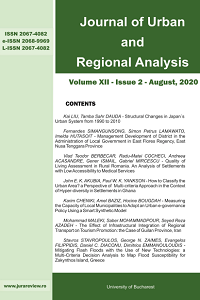STRUCTURAL CHANGES IN JAPAN’S URBAN SYSTEM FROM 1990 TO 2010
STRUCTURAL CHANGES IN JAPAN’S URBAN SYSTEM FROM 1990 TO 2010
Author(s): Kai Liu, Tamba Sahr DaudaSubject(s): Rural and urban sociology, Transformation Period (1990 - 2010), Present Times (2010 - today), Socio-Economic Research, Transport / Logistics
Published by: Editura Universitară
Keywords: inter-cities’ linkage; geo-spatial multivariate analysis; Japan’s urban system;
Summary/Abstract: An urban system is a group of cities acting in close cooperation with one other. An examination of the factors of change in an urban system at the national scale remains to be done, given data limitations and research issues (e.g., scale, boundary). This study aims to clarify the spatiotemporal pattern of Japan’s urban system (JUS) and then to elucidate the characteristics of change and the related factors, based on an inter-regional travel survey conducted in Japan from 1990 to 2010, as well as numerous official censuses. The results demonstrate the entire system’s compactness, the dominance of the metropolises and the local system’s bipolarization under the hierarchical structure of JUS, with the establishment of hub cities and the development of infrastructure during the two decades from 1990 to 2010. Finally, this study explains the factors of change with consideration of socio-economic characteristics and inter-regional interaction.
Journal: Journal of Urban and Regional Analysis
- Issue Year: 12/2020
- Issue No: 2
- Page Range: 117-143
- Page Count: 27
- Language: English

